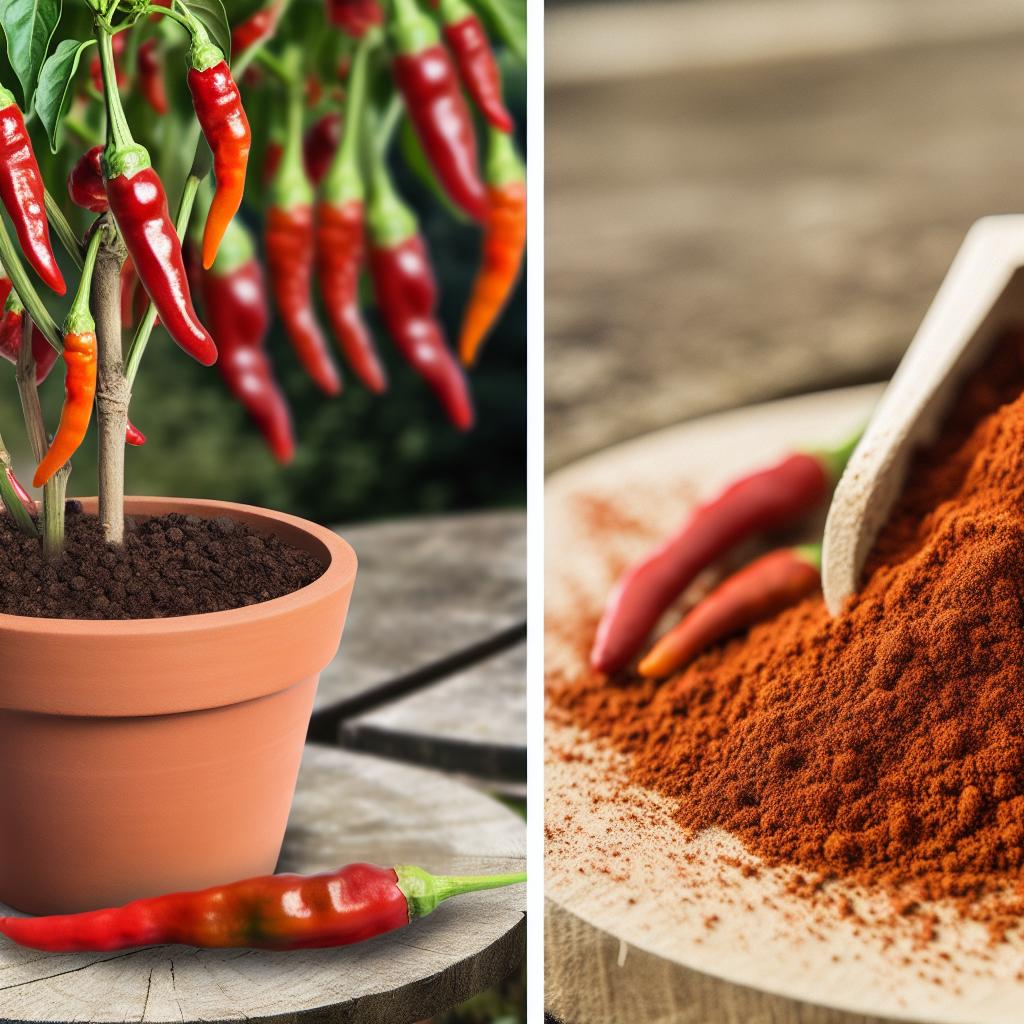
Introduction to Cayenne Pepper
Cayenne pepper, a staple ingredient recognized for its intense heat and vibrant red color, holds a prominent position in culinary and medicinal fields. Derived from the Capsicum annuum species, cayenne pepper is primarily used in powdered form and is renowned for its pungent flavor.
Origin and Cultivation
The cayenne pepper plant originates from French Guiana, but it is now cultivated worldwide, including regions in the United States, India, and China. The plant thrives in warm, humid climates, and it produces small to medium-sized fruits that mature from green to a distinct red hue.
Global Cultivation Practices
Cayenne peppers are grown using techniques tailored to enhance their vibrant color and hot flavor. Cultivators often select sites with optimal exposure to sunlight, which cayenne pepper plants require in abundance. The soils used are generally well-draining and rich in organic matter, which supports healthy growth and robust yields.
In regions like India and China, cayenne pepper is often intercropped with other plants such as tomatoes and beans to maximize land use efficiency. Harvesting typically occurs when the peppers are fully red, a signal of full ripeness and maximum capsaicin content.
Culinary Uses
Cayenne pepper is a versatile spice used in various cuisines to add heat and flavor to dishes. It is prominently used in Mexican, Cajun, and Asian cuisines, adding a spicy kick to dishes such as soups, stews, and marinades. When cooking with cayenne pepper, it’s essential to measure its quantity carefully, as its intense heat can easily overpower other flavors.
Expanding Culinary Horizons
Beyond traditional dishes, cayenne pepper can also be used creatively in modern cuisine. Chefs and home cooks experiment with cayenne pepper in spice blends, hot sauces, and even desserts for a surprising twist. Its heat pairs particularly well with chocolate, enhancing the overall taste experience of sweet-spicy confections like cayenne chocolate truffles or spicy hot chocolate.
Nutritional Profile
Aside from its culinary applications, cayenne pepper is also valued for its rich nutritional content. It contains significant levels of vitamins, including vitamin A, vitamin C, and vitamin E. Additionally, cayenne pepper is a source of antioxidants and capsaicin, the compound responsible for its spiciness, which is linked to various health benefits.
Underrated Nutrients
Cayenne pepper also provides essential minerals such as potassium and manganese. Potassium plays a vital role in maintaining fluid balance and proper muscle function, while manganese is important for bone health and metabolism. These nutrients, albeit in small quantities per serving, contribute to the overall dietary value of cayenne pepper.
Health Benefits
Research suggests that cayenne pepper may offer several health advantages. Capsaicin is believed to have anti-inflammatory properties, which may aid in pain relief. Moreover, cayenne pepper is often associated with enhancing metabolism and promoting cardiovascular health.
Metabolism and Weight Management
Consumption of cayenne pepper has been linked to an increase in thermogenesis, which can enhance the body’s metabolic rate and potentially support weight management efforts. This effect is primarily attributed to capsaicin’s ability to induce heat production within the body.
The Science of Thermogenesis
Thermogenesis refers to the body’s process of producing heat, which can play a part in calorie expenditure. Studies examining capsaicin suggest it may increase energy expenditure and fat oxidation, particularly when combined with exercise and a healthy diet.
Pain Relief and Anti-inflammatory Effects
Cayenne pepper has been used in topical creams and ointments to relieve pain associated with arthritis, joint pain, and muscle soreness. The capsaicin in cayenne pepper interacts with pain receptors, temporarily desensitizing them and alleviating discomfort.
Capsaicin in Pain Management
An intriguing aspect of capsaicin’s application is its use in clinical settings. Its efficacy in reducing neuropathic pain—a challenging type of chronic pain—has been explored in various studies. It is suggested that consistent, controlled use may decrease pain over time, offering relief without the dependency risks associated with some oral pain medications.
Considerations and Precautions
While cayenne pepper is beneficial, it is important to exercise caution, especially for individuals with sensitivities or allergies. Consuming large amounts may lead to stomach irritation or heartburn. As with any dietary inclusion, moderation is advised, and those with underlying health conditions should consult healthcare professionals before incorporating cayenne pepper into their regimen.
Potential Interactions and Allergies
In addition to gastrointestinal discomfort, cayenne pepper should be used carefully by individuals taking blood-thinning medications, as excessive intake might enhance the medication’s effect, leading to complications. It’s also crucial to be aware of allergic reactions, although they are rare. Symptoms such as itching, swelling, or difficulty breathing necessitate immediate medical attention.
In summary, cayenne pepper is more than just a spice used in cooking. Its nutritious profile and potential health benefits make it an ingredient worth exploring, with the caveat of using it judiciously to avoid adverse reactions. The incorporation of cayenne pepper into one’s diet or health regimen should be approached thoughtfully and with respect to individual tolerance and health conditions.

